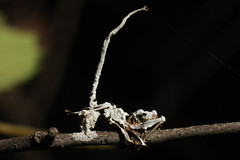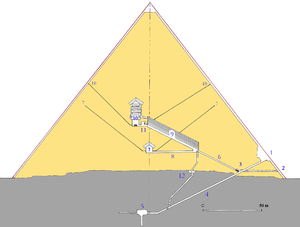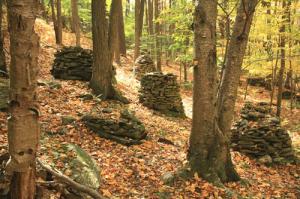Recently in creepy Category
Ugandan health officials say they are working "around the clock" with international health experts to identify a mysterious disease that has killed at least 38 people in the north of the country.Let's hope that whatever this is, it doesn't spread. Read more here.All of the fatalities have been adult men, and a total of 91 people had contracted the disease as of Dec. 8.
Symptoms include headache, fever and vomiting blood, but Ebola and bubonic plague have so far been ruled out as the cause.

Anyway, more to the point, an intrepid soul has compiled a list of the top ten zombie parasites. You can find the list here. Many of these are disturbing, but I find number eight particularly unnerving:
Once known as "horse hair" worms because they would appear mysteriously in horse troughs, Gordian worms spend their parasitic larval stage within the bodies of insects, especially crickets, but spend their non-parasitic adult stage in water. Crickets aren't known for their swimming ability, but try telling that to a parasitic nematode (really, try it. They don't even comprehend English, it's ridiculous.) When it's time for adulthood, the worm compels its cricket to seek out the nearest body of water and dive right in. The confused cricket usually drowns, while the worm wriggles free to find itself a mate.I think it's the Gordian worm's appearance that really does it for me. Check out this uncomfortably-creepy video of a worm emerging from a cricket:


Image by myriorama via Flickr
Parasitoids aren't merely figments of science fiction, though. They exist in nature all around us. One example is the fungus Ophiocordyceps unilateralis, an organism that infects carpenter ants and alters their behavior. According to Wikipedia,
The fungus's spores enter the body of the insect through its respiratory spiracles, where they begin to consume the non-vital soft tissues. When the fungus is ready to spore, its mycelia enter the ant's brain and change how it perceives pheromones, causing the insect to climb up the stem of a plant and use its mandibles to secure itself to the plant. Infected ants bite the leaf veins with abnormal force, leaving telltale dumbbell-shaped marks.This creeps me out, to be honest. According to Harvard scientist David Hughes, "This can happen en masse. You can find whole graveyards with 20 or 30 ants in a square metre. Each time, they are on leaves that are a particular height off the ground and they have bitten into the main vein before dying."
It turns out, interestingly, that this fungus has been extant for nearly 50 million years, if not longer. Researchers recently discovered fossilized evidence of the fungus's influence:
You can read more here.The gruesome hallmark of the fungus's handiwork was found on the leaves of plants that grew in Messel, near Darmstadt in Germany, 48m years ago.
The finding shows that parasitic fungi evolved the ability to control the creatures they infect in the distant past, even before the rise of the Himalayas.


Image via Wikipedia
It's strange enough that the Great Pyramid has interior shafts. Two of them, rising from the King's Chamber, are "believed to be a passageway designed to fire the king's spirit into the firmament so that he can take his place among the stars." But there are other tunnels inside the pyramid. Tunnels that don't lead to the exterior. Tiny, inaccessible tunnels, with creepy and inexplicably lilliputian doors:
In the Queen's Chamber, there are two further shafts, discovered in 1872. Unlike those in the King's Chamber, these do not lead to the outer face of the pyramid.
No one knows what the shafts are for. In 1992, a camera sent up the shaft leading from the south wall of the Queen's Chamber discovered it was blocked after 60 metres by a limestone door with two copper handles. In 2002, a further expedition drilled through this door and revealed, 20 centimetres behind it, a second door.
Driven by morbid curiosity (and no doubt more than a little dread), researchers have designed remote-controlled robots to explore the shafts and drill through the doors:
Now technicians at Leeds University are putting the finishing touches to a robot which, they hope, will follow the shaft to its end. Known as the Djedi project, after the magician whom Khufu consulted when planning the pyramid, the robot will be able to drill through the second set of doors to see what lies beyond.
You can read more here. I shiver to think of what, if anything, may lie on the other side.

does not experience these types of quakes.The depth of this quake was around 5.0km, which suggests it was either geological or induced by oil production, which does happen. Never-the-less this is an interesting area to have a quake due to the fact the area has a large crack running north to south in Texas, discovered several years ago, origin being unknown.
Meanwhile, a smaller quake rattled Northeast Ohio the same weekend.While Ohio has seen a few small earthquakes before, "it's not clear what causes them."
Why the quakes in strange places? Some scientists have speculated, as we have reported before, that the Haiti earthquake in January forewarned increased seismic activity in the Americas. An Iranian cleric, though, offers an alternative explanation:
A senior Iranian cleric says women who wear revealing clothing and behave promiscuously are to blame for earthquakes.
Iran is one of the world's most earthquake-prone countries, and the cleric's unusual explanation for why the earth shakes follows a prediction by the president, Mahmoud Ahmadinejad, that a quake is certain to hit Tehran and that many of its 12 million inhabitants should relocate.
"Many women who do not dress modestly ... lead young men astray, corrupt their chastity and spread adultery in society, which increases earthquakes," Hojatoleslam Kazem Sedighi was quoted as saying by Iranian media. Women in the Islamic Republic are required by law to cover from head to toe, but many, especially the young, ignore some of the more strict codes and wear tight coats and scarves pulled back that show much of the hair. "What can we do to avoid being buried under the rubble?" Sedighi asked during a prayer sermon last week. "There is no other solution but to take refuge in religion and to adapt our lives to Islam's moral codes." Seismologists have warned for at least two decades that it is likely the sprawling capital will be struck by a catastrophic quake in the near future. Some experts have even suggested Iran should move its capital to a less seismically active location. Tehran straddles scores of fault lines, including one more than 50 miles long, though it has not suffered a major quake since 1830.
There probably are more "immodest" women in Ohio and Texas, to be sure, but I can't help but feel that this explanation leaves something to be desired.

At any rate, add two more occurrences to the already long list of strange things going on lately. I hate to admit it, but the past few months have left even me with suspicions and whispering doubts in the back of my mind. I typically scoff at doomsday prophets, Seventh Day Adventists, and survivalists... but what if they're right? I mean, they've been saying the world is ending for thousands of years... but if you keep saying something long enough, eventually you're bound to be right. Right?
So in the meantime, we have a volcanic eruption in Iceland that has led Europe to ground all flights - the largest peacetime grounding of aircraft ever.
Add, on top of that, this bizarre meteor that recently streaked over Wisconsin:
I'm reminded of a foreboding passage from Macbeth:
Let's hope that the earth's recent fevers and shakes are not similarly prophetic.
- The night has been unruly: where we lay,
- Our chimneys were blown down: and, as they say,
- Lamentings heard i' the air, strange screams of death;
- And prophesying, with accents terrible,
- Of dire combustion and confus'd events,
- New hatch'd to the woeful time: the obscure bird
- Clamour'd the live-long night; some say the earth
- Was feverous, and did shake.

An unusual man-made disaster on November 20, 1980 changed the structure of the lake and surrounding land.
In 1980, when the disaster took place, the Diamond Crystal Salt Company operated the Jefferson Island salt mine under the lake, while a Texaco oil rig drilled down from the surface of the lake searching for petroleum. Due to a miscalculation, the 14-inch (36 cm) drill bit entered the mine, starting a remarkable chain of events which at the time turned an almost 10-foot (3.0 m) deep freshwater lake into a salt water lake with a deep hole.
It is difficult to determine exactly what occurred, as all of the evidence was destroyed or washed away in the ensuing maelstrom. The now generally accepted explanation is that a miscalculation by Texaco regarding their location resulted in the drill puncturing the roof of the third level of the mine. This created an opening in the bottom of the lake, similar to removing the drain plug from a bathtub. The lake then drained into the hole, expanding the size of that hole as the soil and salt were washed into the mine by the rushing water, filling the enormous caverns left by the removal of salt over the years. The resultant whirlpool sucked in the drilling platform, eleven barges, many trees and 65 acres (260,000 m2) of the surrounding terrain. So much water drained into those caverns that the flow of the Delcambre Canal that usually empties the lake into Vermilion Bay was reversed, making the canal a temporary inlet. This backflow created, for a few days, the tallest waterfall ever in the state of Louisiana, at 164 feet (50 m), as the lake refilled with salt water from the Delcambre Canal and Vermilion Bay. The water downflowing into the mine caverns displaced air which erupted as compressed air and then later as 400-foot (120 m) geysers up through the mineshafts.
Fortunately, all the miners and bystanders escaped this harrowing incident unscathed. Even this description, though, doesn't do the event justice. Watch this brief clip from the History Channel:


Image via Wikipedia
There is a glacier in Antarctica that seems to be weeping a river of blood. It's one of the continent's strangest features, and it's located in one of the continent's strangest places -- the McMurdo Dry Valleys, a huge, ice-free zone and one of the world's harshest deserts.You can read more here.
Discovered in 1911 by a member of Robert Scott's ill-fated expedition team, its rusty color was at first theorized to be caused by some sort of algae growth. Later, however, it was proven to be due to iron oxidation. Every so often, the glacier spews forth a clear, iron-rich liquid that quickly oxidizes and turns a deep shade of red. Even weirder: scientists think that the bacteria responsible for Blood Falls might be an Earth-bound approximation of the kind of alien life that might exist elsewhere in the solar system, like beneath the polar ice caps of Mars and Europa.

One question on everyone's mind, then, is this: are the Chile and Haiti earthquakes in any way related? The answer is this:
They may have the same parent. Most seismologists agree that the Haitian quake didn't cause Saturday's event in Chile. Earthquakes occur when the stress on a tectonic plate overcomes the friction holding it in place. The last stress-relieving earthquake at this location in Chile occurred in 1835. Since then, friction has held the edge of the Nazca plate in place while the rest of it slid 10 to 12 meters underneath the neighboring South American plate. As a practical matter, that displacement was the sole cause of Saturday's earthquake. But displacement isn't the only thing stressing a tectonic plate. Tides, dammed-up rivers, and pressure from other shifting plates can play a supporting role. Major earthquakes may shift plates slightly and thus increase the stress along fault lines. If another earthquake was poised to happen at some point soon, the added stress from a first quake could serve as a catalyst. While the Haitian earthquake really wasn't big enough to have that effect in Chile, some seismologists believe the much stronger Sumatran quake of 2004--and maybe even the 1960 Chilean quake, the most powerful ever recorded--may have set the stage for both of them.Unsettling (forgive the pun - it's probably not appropriate, to be honest). You can read more here.
Edit: Update: I neglected to mention that the Chile quake altered the earth's axis and shortened the length of the day.

A cairn, for those unfamiliar, is a manmade pile of stones. According to Wikipedia, they are typically conical, and may mark the summit of a mountain or a burial site (you can read about cairns in great detail here). In the northeastern United States, they oftentimes delimit the boundaries of an old field turned fallow (farmers, when clearing a field, would pile all the rocks alongside it). My friend's grandparents have a wooded property in New York, for instance, and there is a rough series of cairn-like piles of stones bordering out what once was farmland. Those stones, though, were quite obviously at one point a wall. The Susquehanna stones aren't so easily explained: they're too haphazard to demarcate farmland, they don't appear to be grave markers, and they certainly don't indicate the summit of a mountain.
The Susquehanna stones, in fact, are apparently the most extensive site of its kind in
 Pennsylvania. Theories abound as to their origin and purpose; some suggest they were erected by Native Americans, similar to the extensive burial mounds in Ohio. But there is no clear sign as to when they were originally built - Pennsylvania author Matt Lake writes that "no literary works, letters, or paintings from the colonial period mention odd rock piles in this part of the country ... the oldest reference seems to date from an 1822 travelogue about a trip across New York State." Princeton scholar Norman Muller, though, believes that the cairns were nonetheless erected well before then.
Pennsylvania. Theories abound as to their origin and purpose; some suggest they were erected by Native Americans, similar to the extensive burial mounds in Ohio. But there is no clear sign as to when they were originally built - Pennsylvania author Matt Lake writes that "no literary works, letters, or paintings from the colonial period mention odd rock piles in this part of the country ... the oldest reference seems to date from an 1822 travelogue about a trip across New York State." Princeton scholar Norman Muller, though, believes that the cairns were nonetheless erected well before then. The stones themselves provide no answers, though. They simply stand silently in the forest, intriguing and confusing the few visitors who happen upon them.






![Reblog this post [with Zemanta]](http://img.zemanta.com/reblog_e.png?x-id=28b17655-c981-43bb-838b-07aef2266c04)
![Reblog this post [with Zemanta]](http://img.zemanta.com/reblog_e.png?x-id=51fb1c72-b5ce-4a0c-922c-23848e730dcb)
Recent Comments
Alec Defosses :
:
Good read. I saved the page for future visit. read moreShakira Furci :
:
Incredibly interesting piece of content. I was in search of read moreRitts :
:
Your site is amazing. I wonder just how do you read moreMeda Kiner :
:
I found your blog in the "Trackback" section of another read moreGale Mady :
:
The integration of bears into a godly American holiday read moreB. Samuel :
:
This information on how earth worms behave is very fascinating. read more